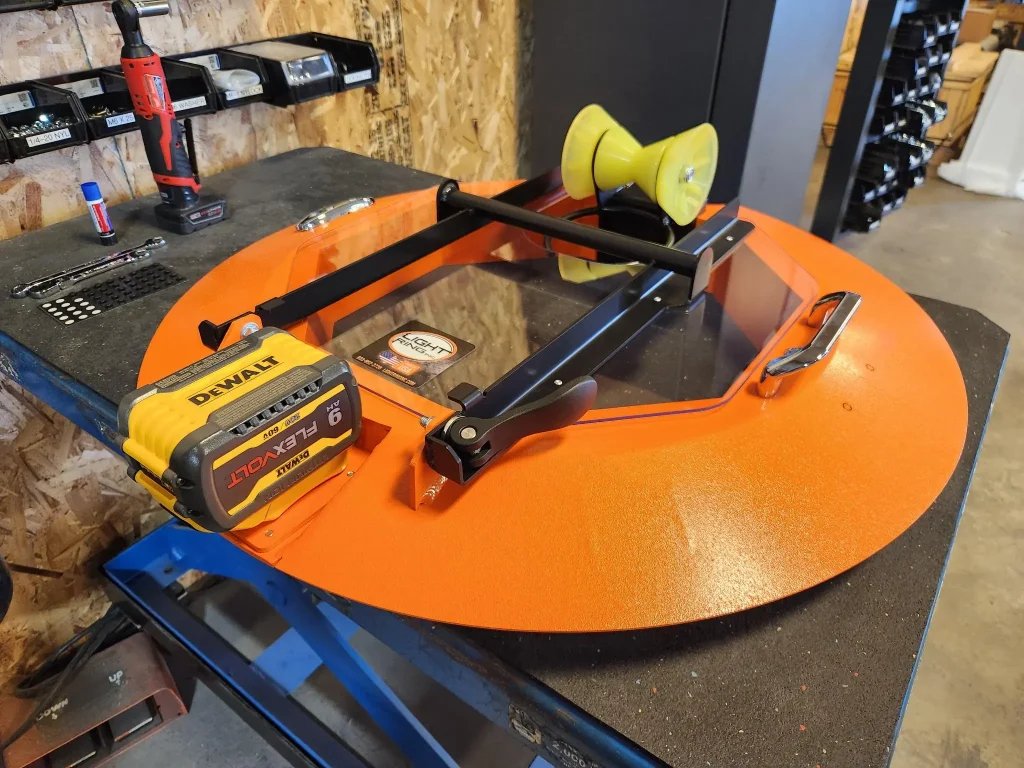
From sidewalks to street corners, manholes are a familiar part of the job. But the risks that come with them are anything but routine. With nearly 20 million access points across U.S. roadways and rights-of-way, these portals are essential to underground infrastructure. They also present some of the most overlooked safety hazards in the field.
On many sites, crews still rely on the same setups used decades ago. A few cones, a flashlight, and a good sense of caution are often the only tools in play. Meanwhile, hazards like limited visibility, airborne contaminants, and fall exposure remain constant.
Every year, workers and civilians are injured in manhole-related incidents. Falls, crush injuries, toxic gas exposure, and electrical shock are more common than most people realize. These incidents are not just bad luck. In many cases, they are preventable with the right preparation and the right gear. Smarter manhole safety tools bring clarity, control, and structure to unpredictable job sites. They help crews work more confidently and show the public that safety is a priority.
On a typical job, crews arrive with little more than cones, a truck light, and maybe a makeshift barricade. Manhole covers, often weighing over 100 pounds, are pried open manually. This poses risks of pinched fingers, back strain, or damaged tools. Once open, the hole becomes a hazard to both workers and the public: a dark, exposed drop with little visibility and no built-in protection.
While OSHA mandates protocols for confined space entry, the reality is that many teams still rely on outdated practices and ad hoc setups. The result? Delays, injuries, and added liability.
What’s less often talked about is how these risks affect more than just workers, they also affect public trust and community confidence. Explosive “manhole events,” blocked roads, and visible emergency scenes can rattle neighborhoods and raise serious concerns. A cracked cover or unguarded hole near a school, sidewalk, or business isn’t just a safety issue. It’s a PR problem that municipalities and contractors can’t afford to ignore.
This is where smarter manhole safety tools make a difference.

Safety shouldn’t be reactive. It should be built in. That’s why innovative, integrated tools like the Light Ring have begun to transform how manhole access is managed.
Designed by field professionals for field professionals, the Light Ring doesn’t just check a box, it redefines the standard. With 6,000 lumens of powerful LED light, it turns the dark void of a manhole into a visible, accessible workspace. Its sturdy, ring-shaped aluminum frame rests securely over openings, acting as both a visual deterrent and a physical barrier to unintentional falls.
But it’s more than just lighting. A flip-up plexiglass shield helps protect against jetting mist and aerosolized contaminants that pose respiratory risks during clean-outs. Downrigger rollers guide hoses into the hole without abrasion or snags.The rope cleat is designed to securely fasten the ‘tiger tail,’ which protects the cable or hose at the pipe opening in the bottom of the manhole. By providing a dedicated tie-off point at the manhole, it eliminates the need to improvise with unsafe options like truck bumpers or manhole covers, which can come loose and cause the tiger tail to shift, leading to equipment damage. A proper tie-off also keeps ropes out of the work area, reducing the risk of trip hazards for the crew. And because it runs on standard DeWalt or Milwaukee batteries, it’s portable, reliable, and ready to go wherever the work takes you.
This combination of features addresses multiple risks in one streamlined setup. It enhances protection for both crews and bystanders and delivers the kind of built-in foresight that smarter manhole safety tools should provide.
To see the impact more clearly, here’s how the Light Ring’s design addresses some of the most common safety and productivity challenges on manhole job sites:
| Manhole Safety & Productivity Concern | How the Light Ring Addresses It |
| Falls due to open, unguarded manholes | Sturdy ring acts as a physical barrier; high-output lighting increases visibility |
| Poor visibility inside and around the opening | 6,000-lumen LED illumination brightens dark and shadowed areas |
| Jetting aerosols and airborne mist | Flip-up plexiglass shield blocks exposure while maintaining visibility |
| Equipment snags and hose abrasion | Integrated roller guides hoses or cables, rope cleat for secure tie off point |
| Manual barricade setup and tear-down delays | One-step deployment removes the need for cones, tripods, or extra barricades |
This kind of built-in foresight doesn’t just help check a safety box. It saves time, prevents injuries, and gives crews the confidence to focus on the work, not the workarounds.

At its core, the Light Ring is about more than safety. It’s about stewardship. It gives contractors and municipalities a visible, proactive way to demonstrate that they take the safety of workers and the public seriously. A clean, controlled setup tells a clear story that builds confidence. It shows the people maintaining critical infrastructure are using tools designed for modern realities, not for yesterday’s standards.
It also makes the job easier. When crews feel confident in their setup, they work faster and with fewer disruptions. When hazards are clearly identified and managed, the public has more trust in the work being done. And when jobs are done right the first time—without injury, delay, or exposure—everyone wins.
Too many safety upgrades are adopted only after something goes wrong. But it doesn’t have to be that way. The Light Ring represents a small investment with a big impact. It’s a manhole safety tool that turns a known hazard into a controlled, illuminated, and manageable workspace.
If your team is still improvising with cones, flashlights, and gut instinct, it’s time to raise the bar with tools that work as hard as your crew does. Let’s make manhole work safer, smarter, and more efficient for everyone above and below ground.
Want to learn more or see the Light Ring in action? Visit lightringinc.com to explore features, specs, and field-tested feedback.